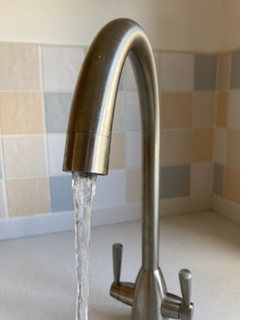 If our water usage patterns don’t change, the UK will have an ongoing water deficit of 4,000 Megalitres per day by 2050. Some water companies are introducing a new strategy to manage the ever-growing demand caused by increasing population and new developments - ‘water neutrality’.
If our water usage patterns don’t change, the UK will have an ongoing water deficit of 4,000 Megalitres per day by 2050. Some water companies are introducing a new strategy to manage the ever-growing demand caused by increasing population and new developments - ‘water neutrality’.
The continued growth in population and housebuilding means that reductions in leakage and domestic consumption have not been enough to offset the increasing demand. In all regions, even in our traditionally wetter regions water companies in response to OFWAT guidance, will be introducing Environmental Incentive Schemes in the near future.
The common elements in all these schemes are:
• Consumption reduction
• Water reuse, and
• Water offsetting
In some areas of England, particularly the southeast and some coastal areas, future developments are being restricted further and will not be permitted unless ‘water neutrality’ can be demonstrated. This requires both existing and new properties to reduce consumption to the extent that overall water usage levels do not increase despite the additional homes.
New developments could be required to supply a water neutrality statement with the planning application. This statement must:
• confirm that there would be no increase in water consumption, for example through a combination of water efficiency, water recycling and offsetting measures.
• includes a water budget showing details of the proposed water consumption, any mitigation measures and mechanisms to secure them in advance of occupation/use. [1]
Reducing water consumption
An example of the new guidance for consumption reduction have been given by Untied Utilities. For a scheme to be eligible to meet the new Environmental Incentive Schemes them must
design for:
1. Water efficiency 100 lpppd and flow regulator (14l per minute), and/or
2. Property level SuDS (installation of water butt/raised planter/rain garden)
For one element of these new requirements there is an easy solution – Groundbreaker’s LoFlo®. Reducing water flow to a property to 14L/min is one of the criteria for meeting these new consumption targets.
LoFlo® is available in two formats:
• NRv2 LoFlo®, which fits into the meter housing adjacent to the meter, or
• LoFlo® InLine, which is fitted after the stop tap inside the property.
Flow restrictors can be installed at the meter, with the permission of the water company, or after the stop tap on the main water supply. Introducing whole site flow restriction can cost as little as
£20 per property.

A fit and forget solution – how it works
‘Over supply’ of water, i.e. water flow rates that are higher than required to provide an adequate supply, results in waste of water. Running taps when brushing teeth, showering, or rinsing cups uses more water than necessary. Installing flow restriction devices has been proven to reduce consumption and are an accepted water efficiency measure for water neutrality statements.
Approximately 40% of domestic water usage is from bathroom and kitchen taps and showers. ‘Eco’ or water saving shower heads and tap flow restrictors are designed to restrict the water flow to a single outlet are highly effective but fittings these come at a price, even in smaller properties.
The alternative, and now a recommended method for achieving water consumption reduction, is whole site flow reduction. Fitting a device such as Groundbreaker’s LoFlo® to the water supply, regulates the level of flow entering customer premises – regardless of network pressure. As the flow of water into the premises is limited, then the amount used in ‘time controlled’ activities is also limited – but without providing a degradation of service. More importantly not requiring any intervention or behavioural change on the part of the customer, so leading to ‘natural’ reduction in consumption.
For further information on how the new conservation guidance may affect future developments, contact your local water provider.
For further information on the full range of Groundbreaker products: www.groundbreaker.co.uk
[1] https://www.westsussex.gov.uk/planning/water-neutrality/
Images © Groundbreaker
- Log in to post comments













